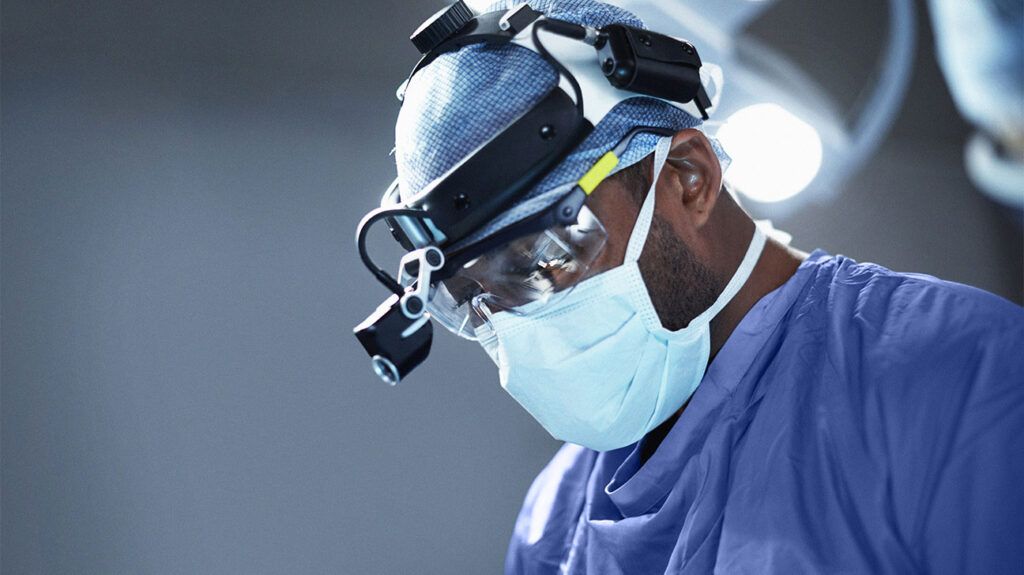Bicuspid aortic valve surgery involves repairing or replacing a bicuspid valve. The procedure corrects a congenital condition in which a person has two cusps instead of three.
A bicuspid aortic valve is a congenital heart defect that often runs in families. It occurs when a person’s aortic valve contains only two cusps, or flaps, instead of three.
The aortic valve controls the one-way flow of blood from the left ventricle (chamber) of the heart to the aorta. The aorta is the main artery responsible for delivering blood to the rest of the body.
A bicuspid aortic valve may cause different issues, including aortic regurgitation (leaking), aortic stenosis (narrowing), or aneurysm of the ascending aorta. The ascending aorta is the first section of the aorta and the largest blood vessel in the body. These complications can lead to potentially serious or fatal heart issues.
Bicuspid aortic valve surgery helps correct the valve and reduce a person’s risk of complications due to the defect.
Keep reading for more information on what to expect from bicuspid aortic valve surgery.

Bicuspid aortic valve surgery involves correcting or replacing the aortic valve.
Bicuspid aortic valve is the most common congenital heart defect affecting
Bicuspid aortic valve surgery involves fixing or replacing the aortic valve. The procedure involves a surgeon opening the chest to access the heart.
However, doctors may consider other treatments if they think an individual is at higher risk of complications from surgery.
Aortic valve surgery allows surgeons to fix issues related to the aortic valve.
Surgery
The current gold standard treatment in children is valvuloplasty. This less invasive procedure involves inserting a catheter through a vein in the groin into a narrowed or stiff artery, such as the aorta, to keep blood flowing properly.
Although this surgery can lead to aortic stenosis later on, surgeons prefer it for younger individuals as it has fewer risks and complications than valve replacement.
People over the age of 18 with bicuspid aortic valve and either regurgitation or stenosis typically require a more invasive replacement procedure. However, other treatment options, such as transcatheter aortic valve replacement (TAVR) may also be available. A person should discuss all options with their healthcare professional.
Doctors may recommend aortic valve surgery for other conditions affecting the aortic valve. Depending on the underlying cause, they may suggest either repairing or replacing the valve.
Read about heart valve replacement surgery.
Aortic valve surgery is a major surgical procedure. A surgeon will likely have
Before surgery
In the weeks before the procedure, a person should talk with the surgical team about what to expect from the operstion. They will typically provide specific instructions for preparing for surgery.
The surgeon will likely order tests to check for the person’s overall health and identify any concerns. These may include X-rays, blood tests, and others as needed.
The surgical team will likely review the person’s current medications and determine whether the person should stop taking them before surgery. The surgeons will also likely advise anyone who smokes to avoid doing so before the procedure.
The surgical team will also advise the person when to stop eating and drinking before the procedure.
Learn more about stopping smoking before surgery.
During the procedure
The surgical team will put a person under general anesthesia, so they will not be awake during the procedure.
Then the surgeon will make an incision in the center of the chest. They will insert tubes into the heart and major blood vessels to act as the heart during the procedure.
Medication stops the heart and clamps help keep a person from losing blood.
The surgeon will then remove the damaged aortic valve and implant a replacement.
They will then restart the heart and remove the assistive device before closing the chest.
Learn more about open heart surgery.
Recovery
According to the National Health Service (NHS) in the United Kingdom, a person can expect to spend about a week in the hospital following the procedure. During this time, the medical team will check on the recovery progress and monitor vital signs.
Healthcare professionals will also discuss recovery at home. A person will likely need to avoid most activities and plan to have someone around to help with their care.
Healthcare professionals can advise on when a person can return to activities.
Learn more about recovery time after valve replacement surgery.
All surgery contains some risk of complications, including bicuspid aortic valve surgery.
Some possible complications of aortic valve surgery include:
- valve failure
- blood clots
- arrhythmia
- bleeding
- infections at the incision site or with the new valve
Valve replacements
Learn more about the types of heart valves.
The following sections provide answers to frequently asked questions about bicuspid aortic valve surgery.
What is the survival rate for bicuspid aortic valve surgery?
The survival rate of people with bicuspid aortic valve following surgery is generally very good and similar to that of the general population.
Many factors, including age and overall health, can affect the survival rates of anyone having surgery.
What is the average age for bicuspid aortic valve replacement?
The majority of people with bicuspid aortic valve will need replacement surgery at some point in their lifetime. Otherwise, they can live generally healthy lives.
The average age for bicuspid aortic valve replacement is around ages 60 years. However, depending on symptoms and heart function, individuals may require valve replacement at a younger age.
Bicuspid aortic valve surgery involves replacing or repairing abnormalities in the aortic valve. It is a major surgery that requires general anesthesia and a lengthy recovery period.
Surgeons do not always immediately correct bicuspid aortic valves. Instead, they will typically watch and wait until issues develop. The majority of people living with the condition will likely require surgery at some point in their lives.
Following surgery, survival rates are high.
